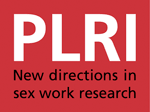drug use
An article in Sexually Transmitted Diseases, June 2008, Vol. 35, No. 6, p.558–565. This study aims to estimate HIV/STI prevalence and to identify HIV risk factors among FSWs and miner clients. It found among sex workers prevalences for HIV of 8.3%, Herpes simplex virus-2 70.8%, Syphilis 12.5%, Neisseria gonorrhoeae 36.8%, Chlamydia Trachomatis 46.3%, Trichomonas vaginalis 22.1%. 90.6% were infected with any STI. Illegal drug use was associated with HIV and 45.8% reported no condom use with the last client. In miner clients, HIV prevalence was 1.8%.

